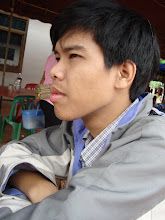CBI is a teaching method that emphasizes learning about something rather than learning about language. An approach to language instruction that integrates the presentation of topics and tasks from subject matter classes within the context of teaching a second or foreign language.
The Relationship of Language and Content in Regular Language and Subject Matter Classes Compared to CBI
In many contexts, students learn language and subject matter separately.

In content-based instruction, students learn language and subject matter simultaneously.

Characteristic of CBI
- Students acquire language while learning about other content areas.
- Content areas are relevant to learners' academic and/or professional needs.
- Language is contextualized through these relevant content areas, and thus, is also relevant to learners' needs.
- Support is provided for learners' linguistic development.
- A focus is placed on developing academic and/or professional language proficiency.
- Authentic materials are used to present content matter.
- The use of authentic materials lends itself to the integration of skills, to increased motivation, and to increased cognitive and linguistic complexity.
https://www.ed2go.com/Classroom/PrintLesson.aspx?lesson=1&classroom=%2B1fBsoEWH0M2QpEniHYJgpXgbhaW7wuICKlJTyu3x1A%3D
http://www.wiziq.com/tutorial/21445-Content-Based-Instruction
http://onlinelibrary.wiley.com/doi/10.1111/j.1944-9720.1989.tb02746.x/abstract
Sample of CBI lesson plan
Unit : Health Topic : Sports & Exercises
Unit : Culture Topic : Local Wisdom
Reading and Writing )
Unit: Travel Topic: Places-Attractive Place
Part 1 / Part 2
Unit: Science&Technology Topic: Changes in Life
Unit: Travel Topic: Places-Attractive Place
Part 1 / Part 2
Unit: Science&Technology Topic: Changes in Life


